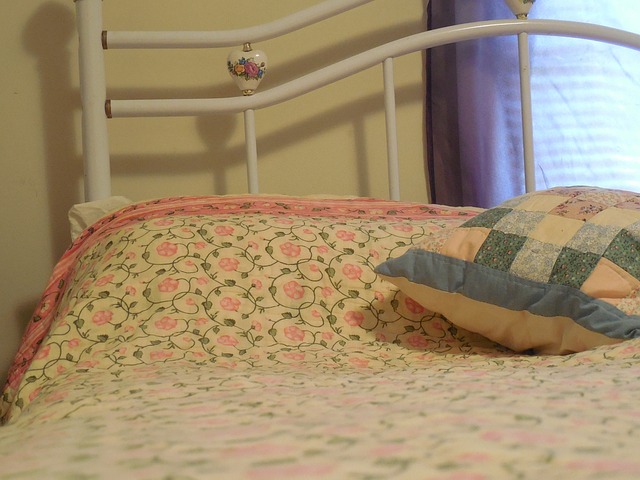
Antique quilts are treasures made of delicate fabrics that tell stories of a bygone era through their intricate patterns and delicate fabrics; they are not only warm companions but also priceless artifacts that require special care and attention to preserve their beauty and longevity. Before we dive into the intricacies of preservation, we must first recognize the diverse fabrics that compose these fabric treasures. From the warmth of wool to the softness of silk, each fabric demands a tailored approach to cleaning and maintenance. Understanding the quilt’s composition allows us to navigate the delicate balance between preserving its authenticity and ensuring its longevity.
As we peel back the layers of preservation, we will talk about different cleaning methods—from the gentle art of hand washing to the meticulous process of spot cleaning. Special attention needs to be paid to delicate embellishments, such as intricate beadwork or delicate embroidery, to prevent accidental damage. After cleaning, proper storage becomes critical. The right environment, acid-free materials, and thoughtful folding techniques create the cradle in which these quilts can rest, protected from the hands of time. These fabric gems are more than just relics; they are storytellers, and our job is to make sure their tales are passed down for future generations. Our goal in writing this guide is not merely to provide helpful guidance, but also to cultivate a profound appreciation for the cultural legacy woven into every stitch.
See also our post on How to Clean Your Baby’s Nursery: Tips for a Healthy Environment
Identifying Antique Quilt Fabrics
Recognizing Different Fabrics
Antique quilts often feature a variety of fabrics, including cotton, silk, wool, and blends. Understanding the fabric composition is crucial, as each material requires specific care. Learn to identify these fabrics by their textures, weaves, and visual characteristics to tailor your preservation approach.
Evaluating Fabric Colors and Dyes
Examine the colors and dyes used in your antique quilt. Some dyes may be more prone to fading or bleeding than others. Test a small, inconspicuous area with a white cloth and water to check for colorfastness. This step ensures that your cleaning methods won’t compromise the vibrancy of the quilt.
Assessing Fabric Condition
Inspect the overall condition of the quilt fabric. Look for signs of wear, tears, or weak spots in the fibers. Understanding the fabric’s condition helps you prioritize delicate handling and determine the most appropriate cleaning methods.
Taking Note of Embellishments
Antique quilts often feature intricate embellishments like embroidery, appliqué, or beadwork. These embellishments require special attention during cleaning. Identify areas with delicate additions, as they may need a more meticulous approach to avoid damage.
Understanding Quilt Construction
Examine the quilt’s construction, noting the stitching patterns and techniques used. Different construction methods may impact how the quilt should be cleaned and preserved. Knowledge of the quilt’s structure guides you in choosing the best approach for long-term fabric care.
Gentle Cleaning Techniques for Antique Quilts
Dry Cleaning
For quilts with delicate fabrics or intricate embellishments, dry cleaning is often the safest option. Seek out a professional textile conservator experienced in handling antique textiles. Ensure they are aware of the quilt’s fabric composition and any specific vulnerabilities.
Spot Cleaning
Address localized stains or spots with a gentle spot-cleaning technique. Use a clean, white cloth dampened with a mild solution of water and a gentle fabric detergent. Pat the stained area, avoiding vigorous rubbing, to prevent further damage or color bleeding.
Hand Washing
If the quilt’s condition permits, hand washing can be an effective cleaning method. Use a bathtub or large basin with lukewarm water and a mild detergent specifically designed for delicate fabrics. Gently agitate the water and allow the quilt to soak, taking care not to wring or twist the fabric.
Air Drying
After cleaning, air drying is the safest way to preserve antique quilts. Lay the quilt flat on a clean, dry surface, preferably on a bed of towels. Avoid hanging the quilt, as the weight of the wet fabric can cause distortion. Flip the quilt periodically to ensure even drying.
Vacuuming
For quilts that cannot be washed, vacuuming is a gentle way to remove surface dust. Use a soft brush attachment and set the vacuum to low suction. Gently pass the vacuum over the quilt, taking care not to snag the fabric or disturb any embellishments.
See also our post on Organizing Chaos: Decluttering Tips for a Tidy and Tranquil Home
Storage Tips for Antique Quilts
Choosing the Right Storage Space
Select a storage area that is cool, dry, and away from direct sunlight. Avoid attics, basements, or spaces prone to temperature fluctuations. Ideal storage conditions help prevent deterioration and discoloration of the fabric.
Using Acid-Free Materials
When storing antique quilts, opt for acid-free materials to minimize the risk of chemical reactions that can harm the fabric. Acid-free tissue paper and boxes protect quilts from acids that may be present in regular cardboard or paper.
Folding Techniques
Fold quilts carefully to avoid creases and stress on the fabric fibers. Use acid-free tissue paper between folds to prevent direct contact between layers. Rotate folds periodically to distribute any potential stress evenly.
Ventilation and Air Circulation
Ensure proper ventilation in the storage area to prevent the development of mold or mildew. Allow for air circulation by placing quilts in breathable containers or covering them with a cotton sheet rather than plastic, which can trap moisture.
Monitoring for Pests
Regularly inspect quilts for signs of pests, such as moths or silverfish. Store quilts in sealed containers with lavender sachets or cedar blocks to deter insects. Periodic checks help identify and address potential pest issues before they escalate.
Repairing and Restoring Antique Quilts
Consulting a Professional Conservator
For significant repairs or restoration work, consult a professional textile conservator. Attempting repairs without expertise can lead to irreversible damage. A conservator can assess the quilt’s condition and recommend appropriate restoration techniques.
Addressing Loose Threads and Seams
Gently secure loose threads and seams to prevent further unraveling. Use a fine needle and thread that closely match the quilt’s original stitching. Take a meticulous approach to avoid causing stress on the surrounding fabric.
Patching Small Holes
Small holes in the quilt can be patched using matching fabric from an inconspicuous area, such as the quilt’s border. Use a careful hand-sewing technique to secure the patch, ensuring it blends seamlessly with the surrounding fabric.
Replacing Missing Pieces
If the quilt has missing pieces, consult a conservator to recreate and replace them with matching fabric. This meticulous process requires skill and knowledge of historical textiles to maintain the quilt’s authenticity.
Documenting Repairs
Keep a detailed record of any repairs or restoration work performed on the quilt. Documenting the process and materials used is essential for maintaining the quilt’s provenance and aiding future conservation efforts.
Displaying Antique Quilts with Care
Avoiding Direct Sunlight
Exposure to direct sunlight can accelerate fabric deterioration and fading. Display antique quilts away from windows or use UV-filtering window coverings to minimize the impact of sunlight.
Rotating Displays
To prevent uneven fading, periodically rotate displayed quilts. Alternating quilts in storage with those on display helps distribute light exposure and ensures all pieces receive equal care.
Using Quilt Sleeves
If framing or hanging quilts, consider using quilt sleeves or fabric-covered dowels for support. This minimizes stress on the fabric and prevents distortion over time.
Maintaining Stable Temperature and Humidity
Maintain a stable environment for displayed quilts by controlling temperature and humidity levels. Fluctuations in these conditions can lead to fabric expansion and contraction, affecting the quilt’s overall stability.
Gentle Cleaning of Display Space
Regularly clean the display area to prevent dust accumulation. Dust can transfer to quilts and become ingrained in the fabric over time. Use a soft duster or vacuum with a gentle attachment to clean the surrounding space.
See also our post on 10 Benefits of Using Natural Air Fresheners in Your Home
Recognizing and Addressing Common Issues
Mold and Mildew
If mold or mildew is detected, consult a conservator immediately. Attempting to remove mold without expertise can cause irreparable damage. A conservator can assess the extent of the issue and recommend appropriate remediation methods.
Staining and Discoloration
Address stains promptly using gentle cleaning techniques. If stains persist, consult a conservator to avoid worsening the issue. Discoloration may be irreversible, but a conservator can advise on methods to minimize further deterioration.
Pest Infestations
If pests are discovered, isolate the quilt and seek professional advice. Do not attempt to treat pests without expert guidance, as improper methods can harm the fabric. A conservator can recommend appropriate pest control measures.
Fabric Weakness and Fragility
Handle antique quilts with extreme care, especially if the fabric is weak or fragile. Support the quilt with both hands when moving or displaying it. Avoid unnecessary handling to prevent additional stress on the fabric.
Environmental Damage
Protect quilts from environmental factors such as smoke or pollutants. Display quilts in clean environments and avoid areas with high levels of airborne contaminants to prevent long-term damage to the fabric.
Engaging in Ongoing Care and Appreciation
Regularly Assessing Condition
Make a habit of regularly assessing the condition of your antique quilts. Periodic checks allow you to identify any issues early on and address them before they escalate.
Documenting Quilt History
Keep a detailed record of each quilt’s history, including its origin, previous owners, and any restoration work performed. Documenting this information contributes to the quilt’s provenance and adds to its historical value.
Engaging in Gentle Handling
Handle antique quilts with a light touch to prevent stress on the fabric. When necessary, wear clean cotton gloves to minimize contact with oils and dirt from your hands.
Seeking Professional Guidance
If in doubt about the best course of action, seek the guidance of a professional textile conservator. Conservators have the expertise to assess the unique needs of each quilt and provide tailored advice for its care.
Sharing the Legacy
Share the stories behind your antique quilts with family members and future generations. Passing down this cultural heritage fosters appreciation and ensures that these fabric treasures continue to be cherished for years to come.
See also our post on How to Prevent Cross-Contamination in Office Spaces
Conclusion
Each quilt, a thread in the rich tapestry of history, holds within its fibers the whispers of those who crafted it and the tales of those who sought warmth beneath its folds. As stewards of these fabric treasures, we carry the responsibility to honor their legacy through gentle care and thoughtful preservation.
Since the art of preserving antique quilts is more than just a useful endeavor—it is a celebration of craftsmanship and a link between generations—we have learned to identify fabrics, navigate delicate cleaning procedures, and create a haven for these quilts inside the folds of acid-free materials. So, as we fold the final page of this guide, let us keep in mind that hidden beneath the seams of these fabric treasures is not only a patchwork quilt but also a timeless connection to our shared past. May your antique quilts continue to tell tales, envelop generations in warmth, and remain fabric treasures for eternity.







